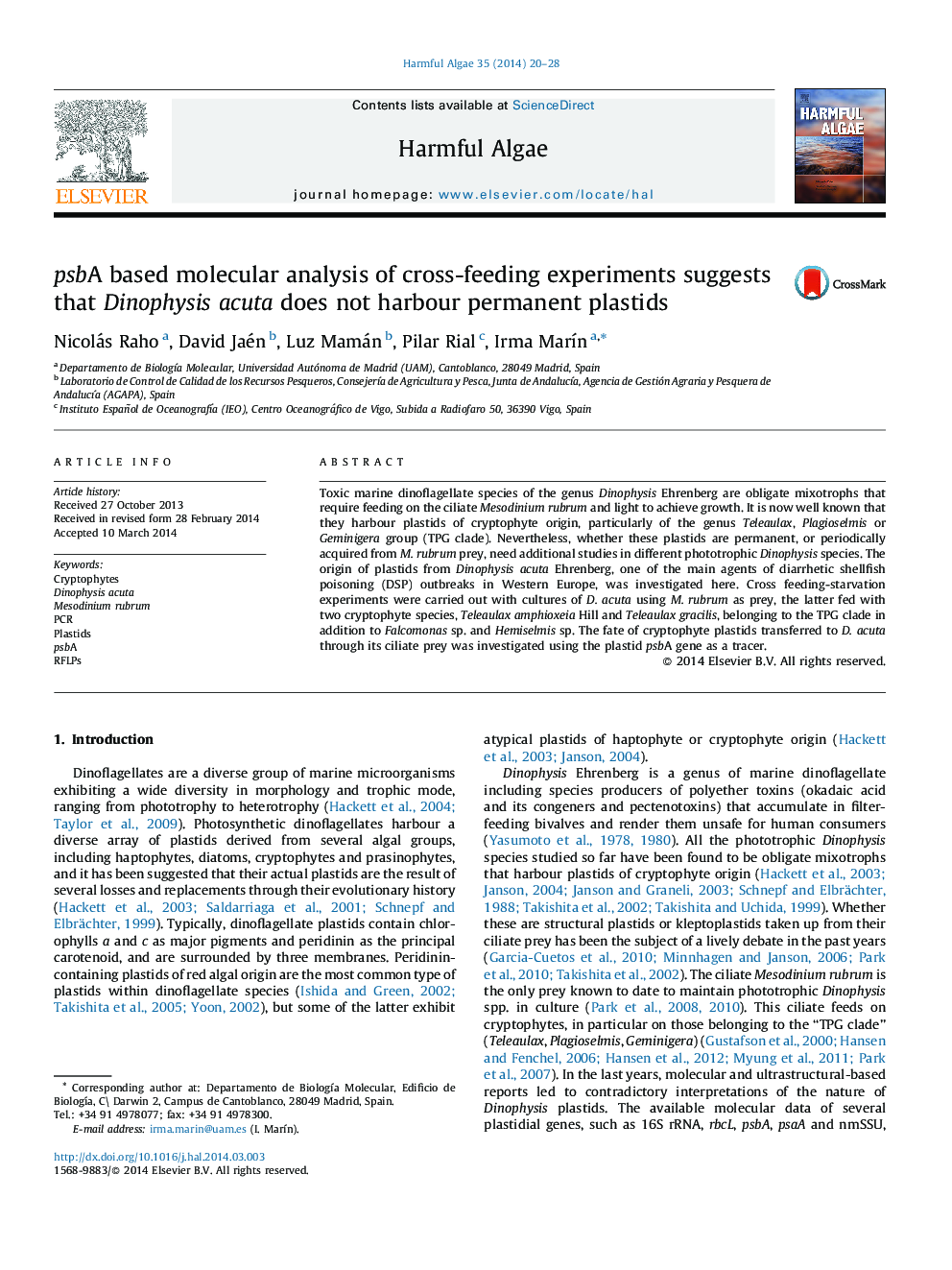| کد مقاله | کد نشریه | سال انتشار | مقاله انگلیسی | نسخه تمام متن |
|---|---|---|---|---|
| 4545293 | 1626936 | 2014 | 9 صفحه PDF | دانلود رایگان |

• After three months starvation, D. acuta still have T. amphioxeia plastids.
• Re-feeding of D. acuta with M. rubrum fed with Teleaulax species gradually replaces the plastids.
• No replacement of plastids occurs when M. rubrum fed with Falcomonas sp. or Hemiselmis sp. is used as prey.
• Our results suggest that Dinophysis acuta does not harbour permanent plastids.
• The RFLP analysis of DMG cultures shows a complete replacement of T. amphioxeia type chloroplasts by those of T. gracilis.
Toxic marine dinoflagellate species of the genus Dinophysis Ehrenberg are obligate mixotrophs that require feeding on the ciliate Mesodinium rubrum and light to achieve growth. It is now well known that they harbour plastids of cryptophyte origin, particularly of the genus Teleaulax, Plagioselmis or Geminigera group (TPG clade). Nevertheless, whether these plastids are permanent, or periodically acquired from M. rubrum prey, need additional studies in different phototrophic Dinophysis species. The origin of plastids from Dinophysis acuta Ehrenberg, one of the main agents of diarrhetic shellfish poisoning (DSP) outbreaks in Western Europe, was investigated here. Cross feeding-starvation experiments were carried out with cultures of D. acuta using M. rubrum as prey, the latter fed with two cryptophyte species, Teleaulax amphioxeia Hill and Teleaulax gracilis, belonging to the TPG clade in addition to Falcomonas sp. and Hemiselmis sp. The fate of cryptophyte plastids transferred to D. acuta through its ciliate prey was investigated using the plastid psbA gene as a tracer.
Journal: Harmful Algae - Volume 35, May 2014, Pages 20–28